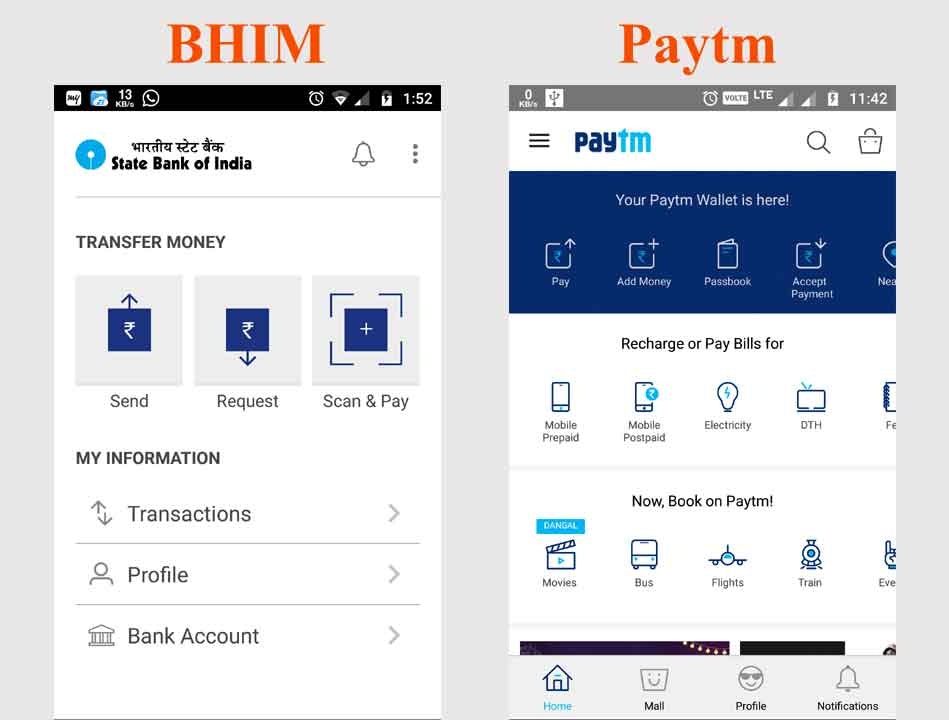Introduction -
For Japanese version , use this link -
https://qiita.com/deepika_tiwari/items/400a8c3fb8fd72e43300
Demographics
India is a multicultural country. There are over 22 major languages with 122 minor languages. The country is home to 9 different religions. Apart from that, there are over 2000 ethnic tribes and refugee minorities living in the country.
Such complexity has makes expansion to India for international firms a difficult task. The huge population provides a promising market, but often companies have to change their product offering to suit the Indian market.
India & Japan : Differences
There are significant differences between India and Japan. Indian work environment is more casual. There is a boom in entrepreneur culture recently. Use of English is also more dominant. There is a greater religious inclination which also makes the dietary habits extremely different.
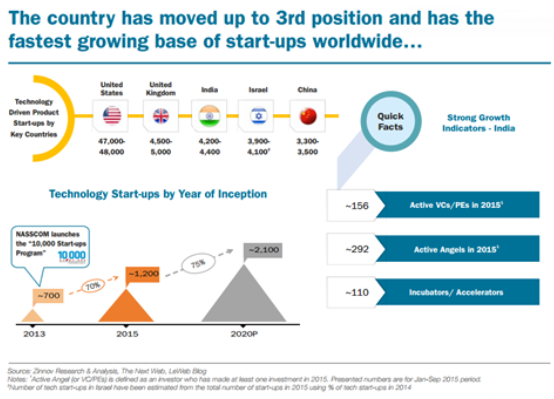
https://www.weforum.org/agenda/2016/10/india-startup-boom-in-charts/
India & Japan : Similarity
There are many similarities between the two. Both countries have similar societal structure. There is a desire to conform to society. Use of honorifics in language is dominant. People usually tend to avoid conflicts. Family structures are also similar.
Internet in India
Mobile Revolution
Internet adoption in India is fairly recent. Due to this, India has jumped the computer phase and switched directly to mobile. Low mobile cost and affordable data plans, mean more people are using mobile to use internet. Because of this, many people are looking to start their business online.
Majority internet sessions in India are coming from mobile users. There has also been an increase of internet usage in Indian languages. However it is important to note that this usage is only in terms of browsing, entertainment and content consumption.
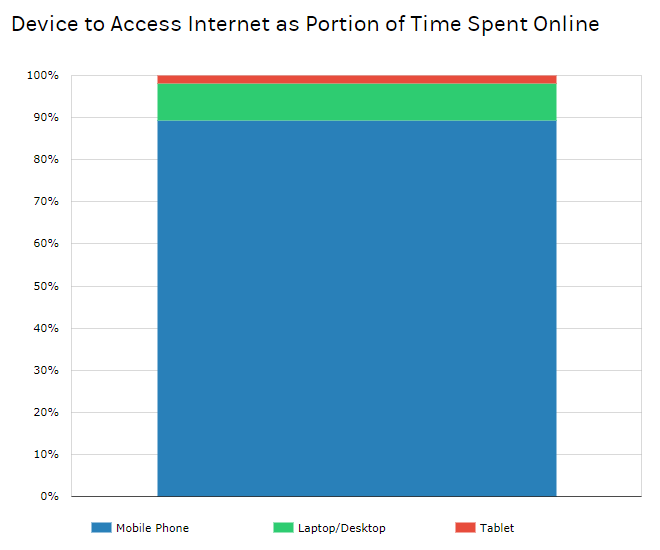
Internet Penetration future
Morgan Stanley estimates that the current 38% countrywide Internet penetration will increase to 60% by 2020, with 90% of them connected by smartphones. Millennials, by that time, are projected to comprise 36% of India's total population, yet could account for 61% of its Internet users and 78% of its online shoppers.
Ecommerce market in India
EC industry leaders
There are currently around 110+ eCommerce technologies in India. The market is dominated by WooCommerce followed by Magento and Shopify. Other companies like Wix, BigCart and Squarespace have smaller market share. WooCommerce is extremely popular in India due to its similarity and partnership with Wordpress. They currently have around 53.33% market share. WooCommerce also has a vast ecosystem. Most Indian companies partner with them.
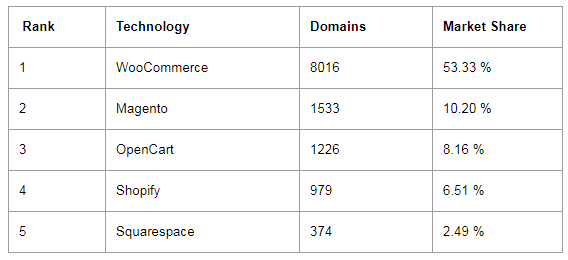
https://www.datanyze.com/market-share/e-commerce-platforms/India/
Additional competition
Users without coding knowledge can use technologies like WIX or GoDaddy to build a website quickly. Due to it’s drag and drop function, WIX is becoming popular lately. They have aggressive advertising strategy on Social Media and YouTube.
EC status in Indian cities.
In terms of total sales and revenue, tier-I cities such as Delhi, Mumbai, Bangalore, and Kolkata are leading markets for online sellers: eight out of every 10 orders come from these cities. Delhi NCR is the largest online purchasing city – making one-third of the country’s total online purchases, followed by a distant Mumbai.
PAYMENTS in Indian EC market-
Popular payment options
- Debit Cards/ Credit Cards
- Net Banking
- E-wallets
- UPI payments
- CoD or PoD (payment on delivery via cash or cards)
India currently has 944 million debit card users compared to a far lower 39 million credit users.
UPI payment - Unique payment method used by Indians
There has been a rise in UPI payments. UPI is a Unified Payment Interface that allows users to make transactions from mobile across banks. UPI is backed by the Government of India. It facilitates inter-bank transactions. The interface is regulated by the Reserve Bank of India. It instantly transfers funds between two bank accounts through mobiles.
DELIVERY & logistics in Indian EC market–
There is no one fixed delivery system in Indian EC market. It varies as per service provider and customer request.
- Delivery can range anywhere between 1 day to 10 days.
- Users with memberships have quicker deliveries. Non- members need to pay for one day/ same day delivery.
- In general, customers can request faster delivery at nominal charges.
- Delivery time also varies by retailers as inventory management is done in!
specific locations only. - Options like same day delivery, one day/two day delivery, morning delivery are available on big EC-sites.
EC market future in India –
India’s e-commerce market, can potentially grow more than fourfold to $150 billion by 2022. It is currently dominated by Amazon and Flipkart. India’s middle-class is expected to swell to 540 million in 2022 from 380 million in 2017.
Long term Strategy
It is important to note short term strategy may not produce successful results.
India may become world’s largest consumer markets by 2025. India’s consumption is expected to rise 7.3% annually over the next 20 years. By 2040, nine out of every ten Indians will belong to ‘the global middle class group’.
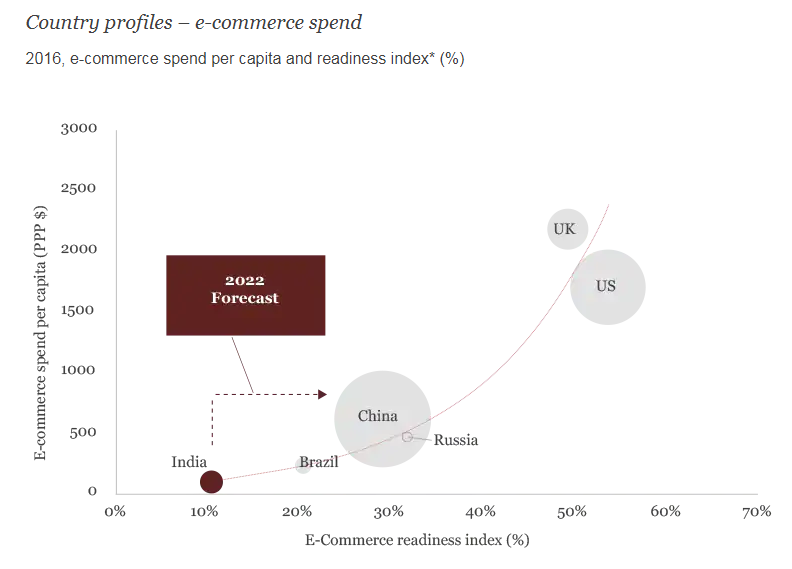
https://www.pwc.in/publications/2018/propelling-india-towards-global-leadership-in-e-commerce.html
Challenges
Unlike China, India has democratic parliament system. So decision making and implementation takes longer. Decision making power is also given to State. This makes implementation of central policies across states challenging, hence disrupting growth. India also struggles with corruption. Growing population has added new issues of pollution. Because of all this, India’s growth will be gradual and not immediate.
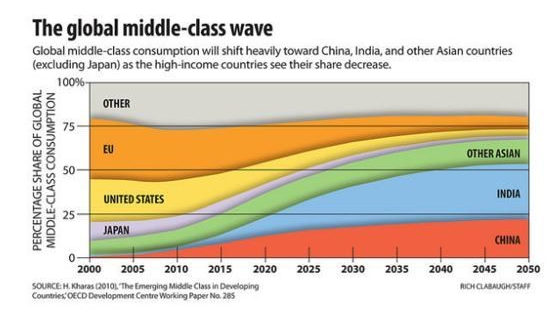
https://www.weforum.org/agenda/2016/11/6-surprising-facts-about-india-s-exploding-middle-class/
EC market future trends
- A heterogeneous market - India EC market will be diverse and highly competitive. The growing consumer market is attracting more foreign brands.
- Mobile first Economy - 80% of Internet sessions are from mobile. This number is supposed to grow in future. More people in rural areas are getting connected by mobiles.
- Market specific EC sites - More market specific sites are coming up. Ex- movie ticket booking, sportswear, cosmetics, stationery, renting etc.
- Hyperlocal Strategies - 97% of Indian population lives outside 3 main cities. Success of eCommerce market will lie in connecting regional communities. Localization will be important
- Entrepreneur culture will drive growth - increasing boom of startup culture will drive growth and opportunities in smaller cities.
